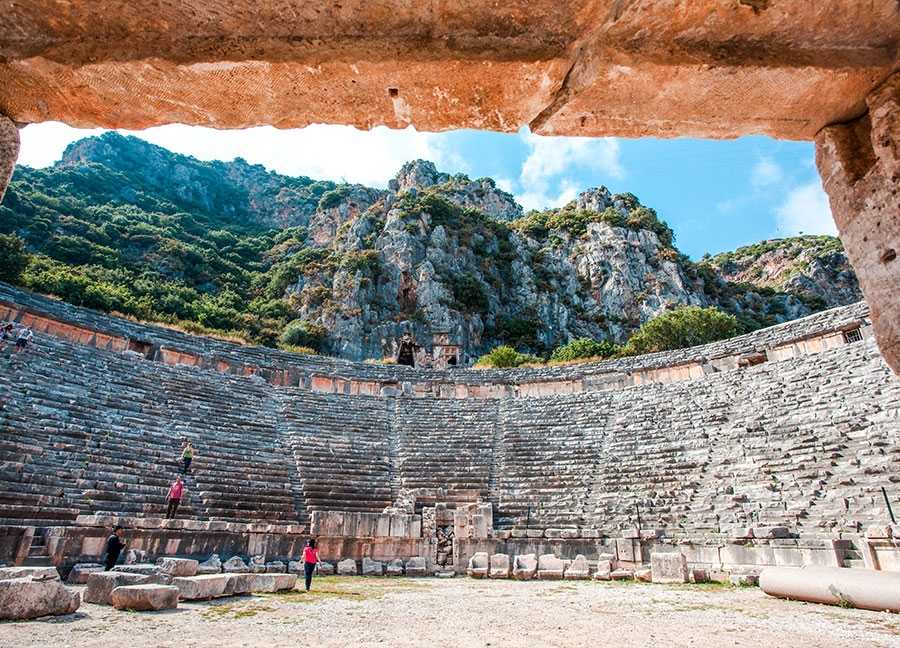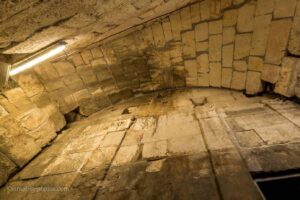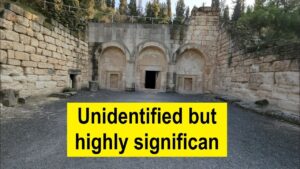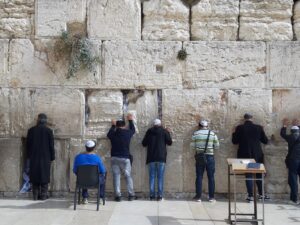Myra Rock Tombs: A Journey Through Ancient History in Demre
Nestled in the heart of Turkey’s Antalya Province, the Myra Rock Tombs offer a fascinating glimpse into the ancient world. These tombs, carved into the cliffs of Demre, are a testament to the architectural prowess and cultural richness of the Lycian civilization. Visiting Myra is like stepping back in time, where history and nature blend seamlessly to create a captivating experience.
Exploring the Myra Rock Tombs
The Myra Rock Tombs are a series of ancient burial sites carved directly into the rock face. As you approach, the sheer scale and intricacy of the tombs are awe-inspiring. The most striking feature is the façade of the tombs, which are adorned with detailed reliefs and inscriptions. These carvings depict scenes from Lycian mythology and daily life, offering a window into the beliefs and customs of this ancient civilization.
While exploring, you’ll notice that the tombs are arranged in tiers, with the most elaborate ones reserved for the elite. The tombs are best viewed in the morning or late afternoon when the sunlight casts dramatic shadows, highlighting the carvings’ details. Don’t forget to bring a camera to capture the stunning views of the surrounding landscape and the tombs themselves.
A Glimpse into History
The Myra Rock Tombs date back to the 4th century BC, during the height of the Lycian civilization. Myra was one of the most important cities in ancient Lycia, known for its strategic location and thriving trade. The Lycians were known for their unique burial practices, and the rock tombs are a prime example of their architectural ingenuity.
In addition to the tombs, Myra is also home to a well-preserved Roman theater, which could seat up to 10,000 spectators. This theater is a testament to the city’s significance during Roman times and is still used today for cultural events and performances.
Getting There and Tips for First-Time Visitors
Reaching the Myra Rock Tombs is relatively straightforward. The site is located near the town of Demre, which is accessible by bus or car from Antalya, about a two-hour drive away. If you’re traveling by public transport, buses run regularly from Antalya to Demre, and from there, it’s a short taxi ride to the tombs.
For first-time visitors, it’s advisable to wear comfortable shoes, as the terrain can be uneven. The site is open year-round, but the best time to visit is during the spring or fall when the weather is mild. There is a small entrance fee, and guided tours are available for those interested in a more in-depth understanding of the site’s history.
Interesting Facts
- The Myra Rock Tombs are part of the ancient Lycian civilization, which had its own language and script, distinct from Greek and Latin.
- The tombs were originally painted in bright colors, although only traces of the paint remain today.
- Myra is also famous for its association with Saint Nicholas, the inspiration for Santa Claus, who served as the bishop of Myra in the 4th century AD.
Visiting the Myra Rock Tombs is a unique opportunity to connect with the past and appreciate the artistry and culture of the ancient Lycians. Whether you’re a history enthusiast or simply looking for a memorable experience, Myra offers something for everyone.








